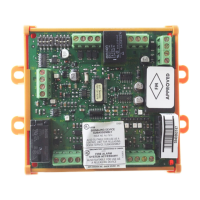Chapter 3: Programming
40 SIGA-REL Technical Reference Manual
3. Complete each SIGA-REL address in strict accordance with Table 18. You
don’t need to enter serial numbers for all addresses. This happens in a later
step.
4. Use the Object Configuration dialog box to assign labels and messages to
each SIGA-REL address, as shown in Table 19.
5. Connect to the panel and use the Communication Functions dialog box to
upload the Signature loop.
6. In the Signature Series mapping tool, open the Actual vs. Expected Data
dialog box (F9 key).
7. For the first two SIGA-REL devices, click Commit Expected.
8. For the third SIGA-REL device, click Unmatched, select the first available
address (the release circuit), and click Accept Actual.
9. For the fifth SIGA-REL device, click Unmatched, select the next available
address (the prerelease circuit), and click Accept Actual.
10. Close all Signature Series mapping tool dialog boxes and windows.
11. Perform a Signature Series conversion and download the database to the
panel.
Table 18: SIGA-REL configuration settings
Typical serial
number [1]
(3) N/O Active Nonlatching
(Class B)
(1) N/O Alarm Latching
(Class B)
(16) Signal Output (Class B)
(16) Signal Output (Class B)
[1] Actual addresses in your system may differ, but they must be consecutive. Serial numbers
must also be consecutive up to the second-to-last digit.
Table 19: SIGA-REL labels and messages

